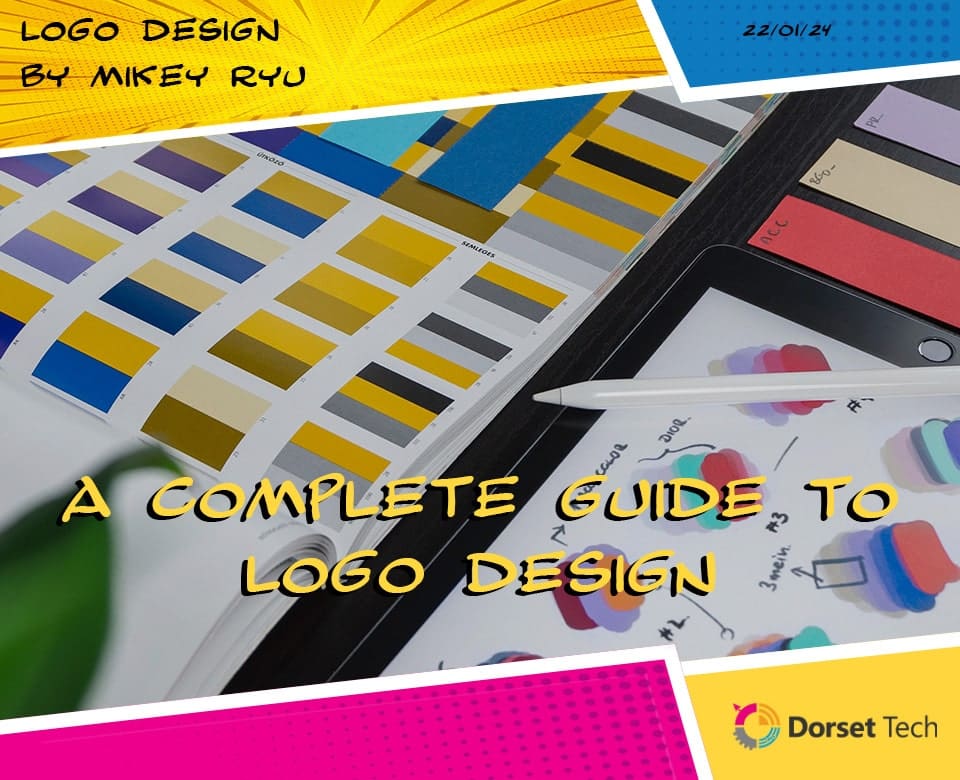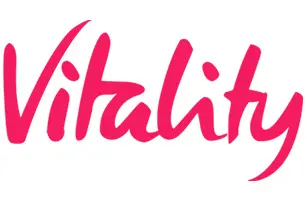
Logo Design: A Complete Guide
Contents:
- What is a logo
- What is the role of a Logo
- Things you need to know before designing a logo
- The Do’s And Dont’s of Logo Design
- Coming up with a Logo Idea
- How to create a Logo
In the vast realm of business, a logo is more than just a symbol; it’s the visual representation of a company’s identity. A well-crafted logo speaks volumes about the brand, conveying its essence, values, and personality. In this blog, we’ll delve into the intricacies of logo design, exploring what a logo is, its role, essential considerations before diving into the design process, and the do’s and don’ts that can make or break your logo. With the expertise of Dorset Tech, we’ll also guide you through the creative journey of coming up with a logo idea and the practical steps to bring it to life.
What is a Logo?
A logo is a graphic mark, emblem, or symbol that serves as a visual representation of a business or organization. It is the face of a brand, creating a visual identity that distinguishes it from others in the market. Logos can be composed of symbols, text, or a combination of both, with the ultimate goal of leaving a lasting impression on the audience.
The Role of a Logo
The role of a logo goes beyond mere aesthetics. A well-designed logo can:
- Create Brand Recognition: A memorable logo helps consumers easily identify and remember a brand, fostering trust and loyalty over time.
- Convey Brand Values: Logos often encapsulate the essence and values of a brand, acting as a visual cue for what the company stands for.
- Facilitate Brand Recall: A strong logo can trigger instant brand recall, making it crucial for building a long-lasting relationship with the audience.
- Establish Credibility: A professional and well-designed logo reflects positively on the brand, contributing to its credibility and perceived professionalism.
Things You Need to Know Before Designing a Logo
Embarking on the journey of logo design requires careful consideration of several key factors. Before diving into the creative process, keep these aspects in mind:
- Understand Your Brand/USP(Unique Selling Point): Before putting pen to paper (or cursor to screen), delve deep into understanding your brand’s identity, values, and target audience. This foundational understanding will guide the design process.
- Scalability is Key: A logo should be versatile and scalable, ensuring it looks good across various platforms, from business cards to billboards.
- Consider Color Psychology: Colours evoke emotions and associations. Choose colours that align with your brand’s personality and resonate with your target audience.
- Typography Matters: If incorporating text into your logo, choose fonts that complement your brand. Ensure readability and scalability, avoiding overly intricate fonts that may be challenging to reproduce in smaller sizes.
The Do’s and Don’ts of Logo Design
The Do’s
- Simplicity is Key: Keep your design simple and easily recognisable. Some of the most iconic logos are minimalist.
- Make it Timeless: Aim for a design that will withstand the test of time. Avoid trendy elements that may quickly become outdated.
- Versatility Matters: Your logo should look good in black and white and in colour. Ensure it retains its impact when scaled up or down.
- Consider Context: Understand where and how your logo will be used. Ensure it adapts well to different mediums and backgrounds.
- Relevance: Ensure that your logo is related to what your company does or is about.
The Don’ts
- Avoid Overcomplication: Too many elements can make your logo confusing. Aim for clarity and simplicity.
- Steer Clear of Trends: While it’s essential to be contemporary, don’t succumb to fleeting design trends that might quickly fall out of favour.
- Don’t Rely Solely on Trends: Similarly, don’t be afraid to inject personality into your logo. Trends come and go, but a unique identity stands the test of time.
Coming Up with a Logo Idea
The creative process of generating a logo idea involves brainstorming, sketching, and refining. Here are some steps to guide you:
- Research Your Industry: Understand the visual language of your industry. Identify common themes and elements while seeking ways to stand out.
- Brainstorm Concepts: Let your creativity flow. Jot down ideas, even the seemingly absurd ones, as they can lead to unexpected breakthroughs.
- Sketch Freely: Start sketching rough concepts based on your brainstorming. Don’t worry about perfection at this stage; focus on capturing the essence of your ideas.
- Refine and Iterate: Review your sketches, identifying the most promising concepts. Refine and iterate, seeking feedback from colleagues or design professionals.
How to Create a Logo
With the groundwork laid, it’s time to bring your logo to life. Here’s a step-by-step guide:
- Choose Your Design Software: Depending on your skills and preferences, choose a design software that suits you. Adobe Illustrator is a popular choice for its vector capabilities.
- Start with Basic Shapes: Begin by recreating your refined sketch using basic shapes. This helps in maintaining clean lines and ensures scalability.
- Incorporate Typography: If your logo includes text, import or create the necessary typography. Pay attention to font spacing, size, and legibility.
- Experiment with Color: Apply the chosen colour scheme to your design. Test how your logo looks in different colour combinations and backgrounds.
- Review and Iterate: Step back and review your design. Seek feedback from others and be open to making adjustments. Iterative refinement is key to a successful logo.
- Export in Various Formats: Once satisfied, export your logo in various formats (JPEG, PNG, SVG) to ensure compatibility across different platforms.
In the dynamic business world, a well-crafted logo is your brand’s silent ambassador. With the guidance of Dorset Tech, embark on the journey of logo design with confidence, blending creativity and strategy to create a visual identity that stands the test of time. Remember, a great logo not only looks good but also tells a compelling story about your brand.




















